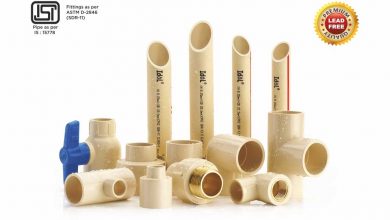Vcuum Tube Radio and Transistor Radio Comparison

Introduction
Everyone is familiar with the radio in daily life. We use it to make the life colorful. But you know it used to be not as portable as it is now. What is it like in the past, and how has it changed?
The radio had the revolutionary progress and improvement. Because the vacuum tube was invented. According to the circuit and performance, valve radio was improved. With time goes by, transistor technology develops. Radios with transistors gradually became popular. It’s what we know as a transistor radio. Radios are still widely used for many functions. Here two main radios will be described in detail below.

1 Vacuum Tube Radio
The valve radio, also known as the vacuum tube radio, was a product of the early 20th century. Immediately became the new favorite of that era. Because the launch of the broadcasting station. By the late 1920s, vacuum tube radio equipment replaced the primitive spark-gap systems. It was common on most merchant ships. This new equipment could send and receive signals virtually worldwide. That is, using high frequency or “short-wave” bands. Tube technology allowed radio signals to be tuned. It had greater precision than spark-gap. The basic design for tube radio was perfected by the 1930s. And continued in use on merchant vessels into the 1980s.
1.1 Classifications
AM (Amplitude Modulation) Radio
When tube radios were popular, there were different types. AM radios were the mainstream products. AM wave modulates the high-frequency carrier with audio signal. Its waveform is symmetrical. The amplitude is the same as that of the modulated signal. Getting the audio signal after high-frequency component is filtered out. In addition, the frequency of the carrier signal is the broadcasting station frequency. There are two main types of AM radios. _Direct-amplifier Type
_External (self) Differential Type
1) Direct-amp Radio
It also called high-amp radio, its typical circuit structure is as follows:
(High Amplifier)—Detection—Low Amplifier—Power Amplifier
A circuit that uses a grid detector and high-frequency positive feedback. That is regenerative radio. It can obtain higher sensitivity and amplitude selectivity. A regenerative radio can receive AM telegraph signals. Especially, radios have high amplifier and short wave. For example, most of the old Japanese-made radios have such circuits.
Direct-amp radios are prone to self-excitation of high-frequency signals. And high-end and low-end gains are uneven. Regenerative radios have poor selectivity without high-amplification. In addition, the reed speakers are generally used. So they are gradually replaced by superheterodyne radios.
2) Heterodyne Radio
The heterodyne radio adopts a frequency conversion circuit. Its high-frequency oscillation circuit and the input signal have a certain difference. After the two are mixed, a fixed intermediate frequency signal (455~465KHz) is generated. Sometimes the oscillation frequency higher than the signal frequency a heterodyne type.
Heterodyne plus intermediate frequency amplifier circuit is called superheterodyne. This type of circuit requires a single electron tube to oscillate. Later a multi-pole or composite tube dedicated to frequency conversion appears. The superheterodyne type is the most common of commercial radios. It has an automatic volume control and can add tuning instructions. The circuit principle will be described in detail later. This radio can obtain more stable and higher gain. Due to amplifying the fixed frequency, its sound is better. The disadvantage is that there is image frequency interference.
The circuit structure of a typical superheterodyne radio is as follows:
Frequency Conversion—Middle Amplification—Detection—Low Amplification—Power Amplification
3) Autodyne Frequency Conversion Radio
Using ordinary pentodes for conversion is only suitable for the mid-band. The middle frequency is 175KHz. Due to the special frequency conversion tubes, it is rarely used now.
FM (Frequency Modulation) Radio
FM radio transmits signals through the FM frequency modulation carrier. Due to the shorter wavelength, the signal transmitted is much better. Comparaed with the other radios that uses the AM wavelength. What’s more, due to the short wave, the transmission distance is relatively short.
FM wave works in the ultra-high frequency band. It can accommodate many radio stations. More over, it can be reused at a distance of hundreds of kilometers. Also it can effectively solve the problem. Such as congestion of medium and short wave radio stations.
1.2 Advantages and Disadvantages of Tube Radio
Advantages of Valve Radio
1) The valve tube circuit has a simple structure and good anti-overload performance.
2) The characteristics of the tube radio are better than those of the transistor or ICs. Especially the power amplifier circuit has sound performance. The Class A power amplifier circuit has little change at zero signal and full signal. Here talks the screen current. Due to have an output transformer for output impedance matching. The performance is stable. But the distortion of the line work area is very small. And the harmonic content is very rich.
3) The speakers used in valve radios are generally larger in size. But the transistor or integrated circuit radios are not.
4) The IF circuit characteristics of tube radios are equally well.
5) Have collection value.
Disadvantages of Valve Radio
As for the shortcomings, valve tubes have large size. Especailly they used as basic components. Built-in accessories are also bulky. Power consumption also increased. So the overall quality has become poor. Such as inconvenient to carry, and even poor seismic performance. In addition, it is very difficult to make FM stereo radio devices. Because early tube radios can only receive shortwave and medium waves. These shortcomings eventually led to the replacement. Because transistor radios have many advantages in use.
1.3 Vintage Valve Tube Radio Models for Sale
AEG Radio
Blaupunkt
German EMUD
Graetz Vintage Radio
Grundig Vintage Radio
Hornyphon Vintage Radio
Vintage Koerting Radio
German Metz Vintage Radio
Vintage Nordmende Radio
Philips Vintage Radio
Vintage Saba Radio
Vintage Siemens Radio
Telefunken

2 Transistor Radio
2.1 Transistor Radio Overview
The transistor radio is the second generation radio. Compared with vacuum tubes, transistors are small in size, light in weight, resistant to vibration, long in life, and low in power consumption. This kind of radios can be made compact. So they have relatively stable performance. The Regency TR-1 was the first commercially manufactured transistor radio. It developed by Texas Instruments and IDEA Inc., introduced in 1954.
Use transistors to process and amplify signals. It is a small transistor-based radio receiver. Also it is simple for many people.
2.2 Selection Matters
To choose a good transistor radio, you must first understand four basic relationships:
1) The larger the chassis volume, the better the sound quality.
2) The larger the horn diameter, the better the sound quality.
3) The larger the battery volume, the longer the relative service life of the battery.
4) The longer the magnetic bar, the higher the sensitivity.
Secondly, we should also pay attention to five points when selecting:
1)The change after the power supply voltage is reduced should be small.
2)The distortion of the offset radio should be small.
3) The volume change should be small when turning the button.
4) Human body induction has little influence. When close to the radio, it will have a certain impact on the work of the radio. This situation is particularly obvious for shortwave.
5) The noise should be small.
2.3 Transistor Radio Brands for Sale
Edifier
GAORUI HOME TEXTILE
SONY
Rolton
HALFSUN
Panda
Soaiy
Nintaus

Want to get more series of info, no matter daily life or professional fields, you can visit Reca Blog.





